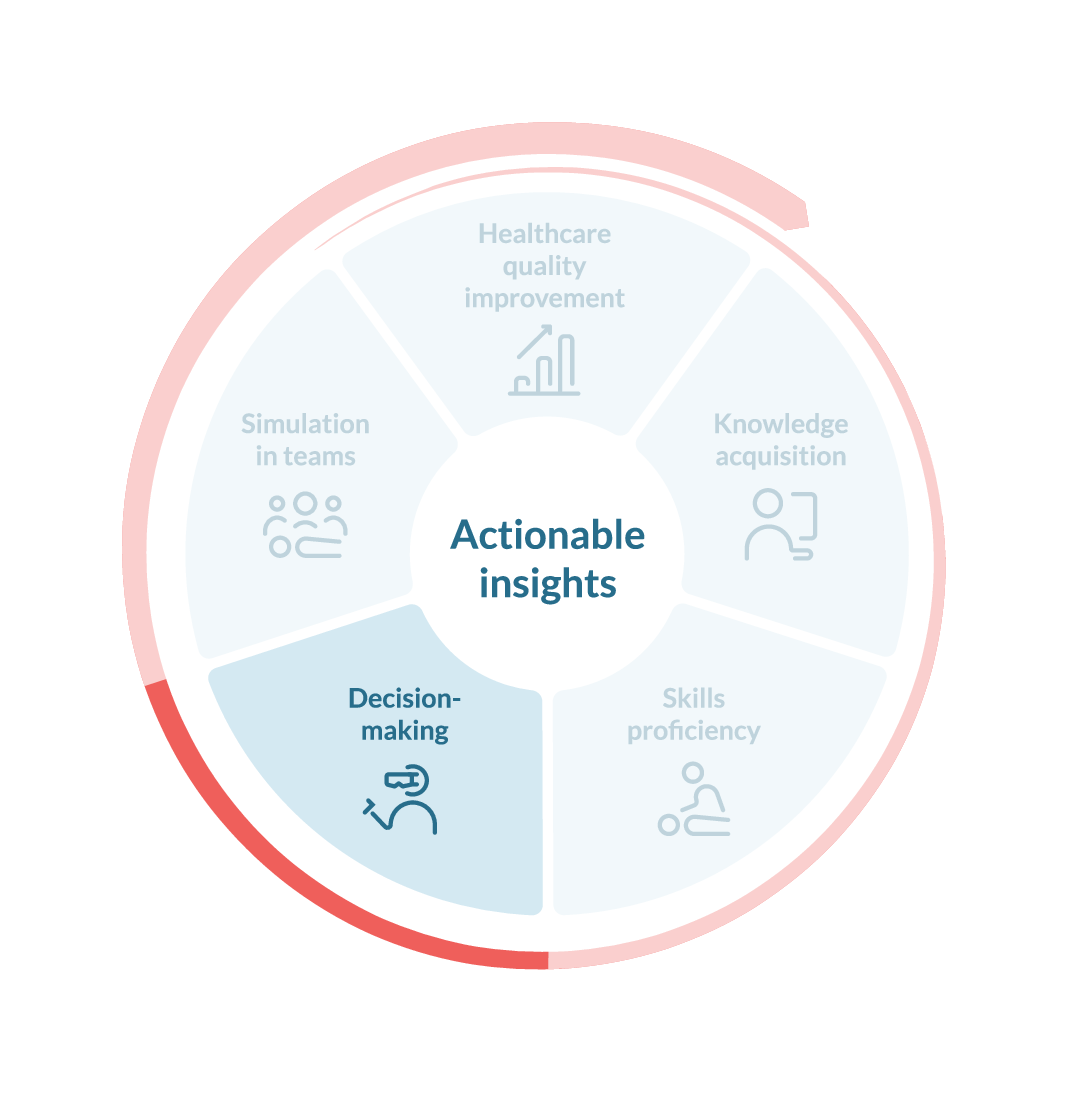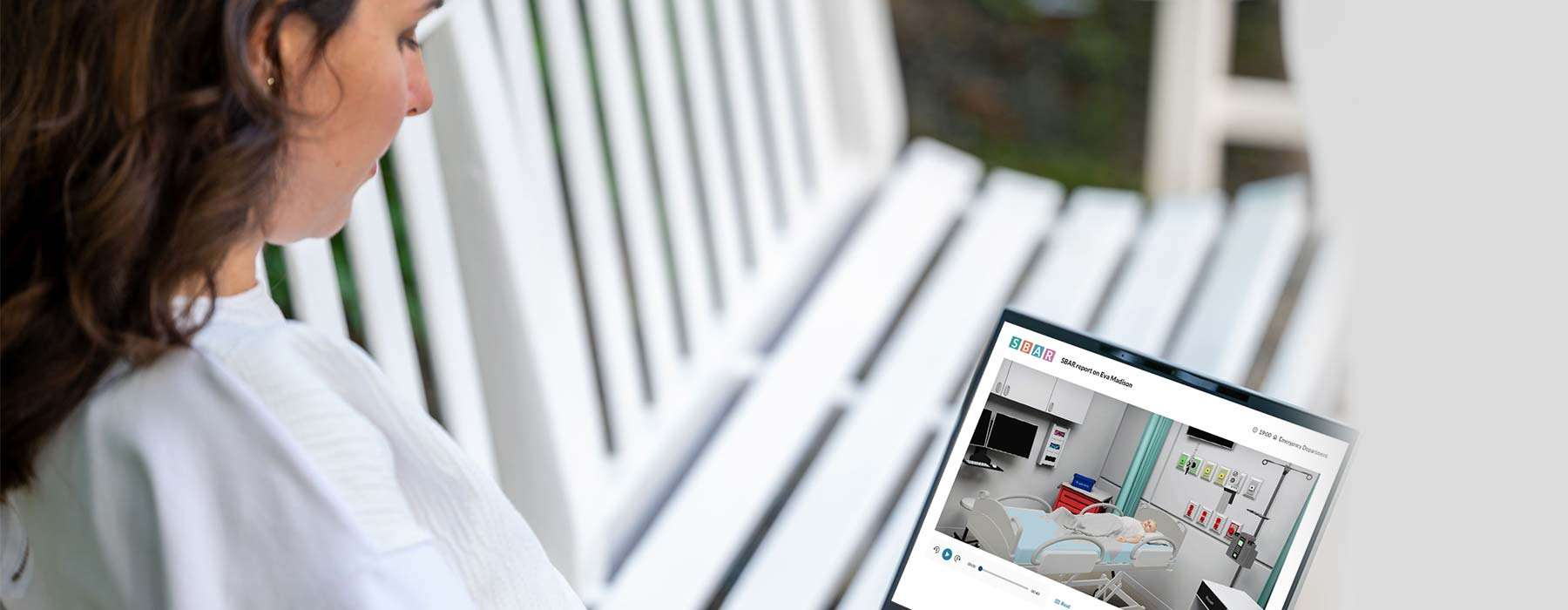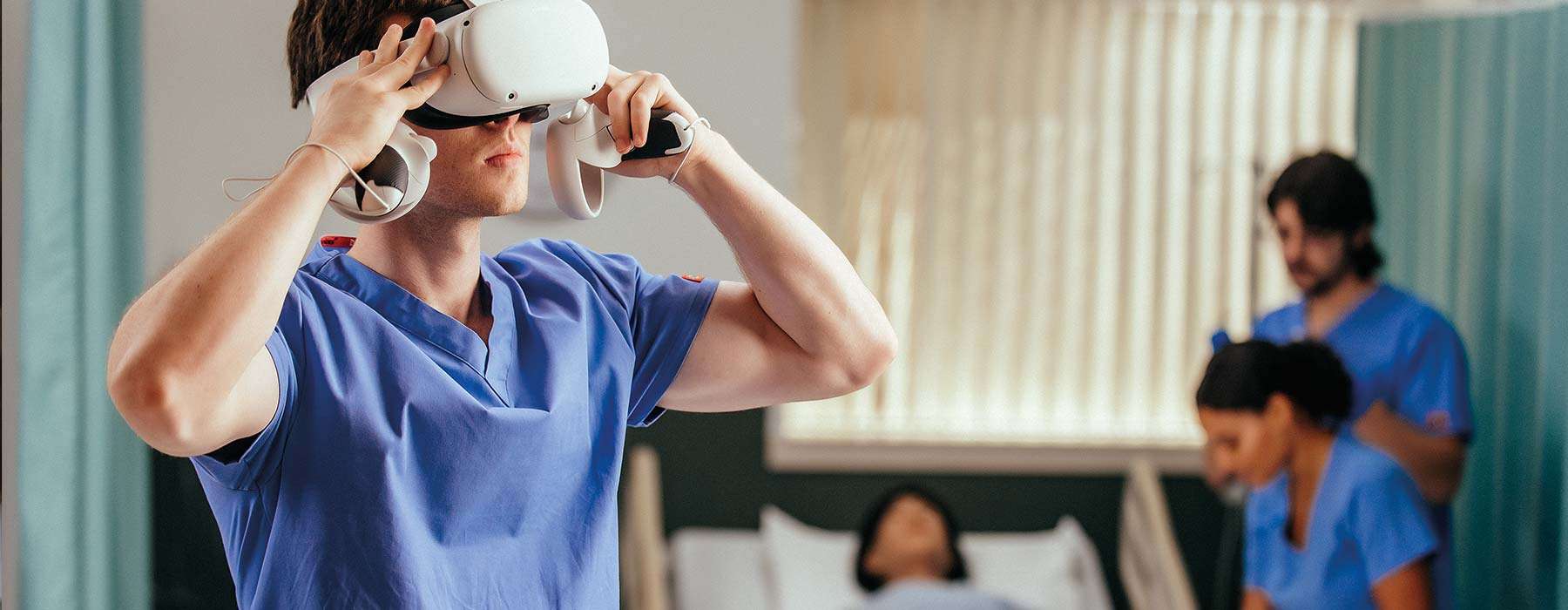How Virtual Simulation and Virtual Reality Combined Can Fill a Gap in Your Nursing Education Program
Virtual Simulation (VS) and Virtual Reality (VR) have become essential tools in nursing education, particularly for teaching and reinforcing a student’s critical thinking skills. A 2020 survey conducted by the National League for Nursing reported that 86% of nursing programs used some form of VS in their curriculum. And a quick internet search will show how many leading nursing programs have already added VR.
VS and VR are two different educational tools. While both have overlapping similarities in that they are "virtual", it is the strategy of using them in tandem and in the correct place and sequence that offers the most dramatic results. VS and VR both provide contextual learning experiences that all student nurses should experience during their education. And yet they can be utilized to meet different educational needs.
Laerdal, in partnership with Wolters Kluwer and the National League for Nursing, has developed two solutions, NextGen vSim for Nursing (VS) and vrClinicals for Nursing* (VR) to ensure a comprehensive and adaptable solution for any nursing curriculum.
NextGen vSim for Nursing (VS) focuses on caring for one patient at a time and understanding how to manage patient care safely and effectively around specific content areas.
vrClinicals for Nursing (VR) was specifically designed to help students develop their skills in prioritizing care between multiple patients while also managing interruptions in care. This immersive technology allows students to care for patients in a busy nursing unit while being challenged with common changes in patient status and distractions in their day.
Experiential Learning and Why Virtual is a Great Fit
VS and VR can both be used as active teaching strategies to engage learners to acquire new knowledge, skills, and attitudes but also to demonstrate how to apply their learning. VS and VR follow the principles of Kolb's experiential learning theory which focuses on the idea that we learn best from experience. VS and VR both offer the learner a concrete experience, time to reflect and learn from their actions, plus the ability to try the experience again.
VS and VR both permit the learner a sense of ownership in generating and controlling their own actions and allowing the learner to make their own choices. VR has one additional benefit for the learner, and that is presence. Presence is a unique form of "suspended disbelief." Presence is the sensation of "being there". VR enables complete immersion of the physical body in a non-physical world, providing an engrossing experience free from any external distractions.
VS and VR also align well with Laerdal's Circle of Learning to allow students to move beyond skill proficiency and into activities that focus on decision-making. This allows learners to begin to understand how the nurse is an integral part of the healthcare team.

VS and VR are ideal means within the Laerdal Circle of Learning to develop a learner's decision-making skills and give them an edge as they go into more advanced simulation in teams.
VS and VR are Important Building Blocks Towards Competency
Competency-Based Education (CBE) is nearly a mandate in nursing education today advocated by every institutional authority, including the National League for Nursing. The National League for Nursing supports CBE as the solution to many of the challenges faced by healthcare.
The focus of CBE is to ensure that students acquire the knowledge, skills, and abilities needed to provide safe, effective, patient-centered care before they ever go to their first job.
The genius of incorporating VS and VR into the CBE paradigm is that both VS and VR support a standardized approach to teaching competency. VS and VR afford learners the opportunity to practice and apply content that they have already as they care for patients in different situations. During each scenario, they receive automated formative feedback and later participate in a debrief with their instructor to support their development in traditional clinical practice.
This process is crucial because a learner is able to care for patients in multiple situations while receiving clear feedback and guidance to continue on their competency development journey. VS and VR can provide those multiple experiences for learners and help ease the burden from intensive instructor-driven activities. Advocates of CBE call for better formative experiences for learners and for outcomes of those experiences. VS and VR provide a solution.
It's About Time
The journal Clinical Simulation in Nursing reported that virtual simulation reduced the time needed to learn certain skills by up to 50%. The Journal of Medical Internet Research found that VR reduced the time needed to learn certain skills by up to 33%.
With faculty shortages on the rise, time has become an issue for educators everywhere. Laerdal’s virtual solutions can teach core competencies to your students, allowing you to focus on those parts of your curricula that will benefit most from your personal guidance and facilitation skills.

NextGen vSim for Nursing Brings Practicality to VS
Working with Wolters Kluwer, Laerdal has been at the forefront of bringing virtual simulation to the nursing community since we introduced vSim for Nursing in 2014. Learning from some of the best in nursing education and how they have used vSim for Nursing to achieve outstanding results, we have now introduced NextGen vSim for Nursing.
As a VS solution, NextGen vSim for Nursing focuses on foundational scenarios where learners can learn standard best practices and build clinical judgement skills that they will need throughout their career. Each scenario presents a single patient experience where the outcome relies on the learner’s decision-making abilities. Each case is repeatable, and learners can practice each scenario until they have achieved mastery.
NextGen vSim for Nursing can be used across laptop (PC) and tablet devices and be assigned to students for remote learning, or it can be used in the classroom to support curriculum content.

vrClinicals for Nursing Lets Students Build on NextGen vSim Learning
Students who have experienced scenarios delivered through NextGen vSim will appreciate the effortless transition to vrClinicals for Nursing. And, they will appreciate building on their previous learning to master new challenges.
As a VR solution, vrClinicals for Nursing focuses on advanced scenarios where clinical judgment in a busy, realistic hospital environment becomes essential. Here, learners face the challenge of patient prioritization over multiple rounds with several patients. As learners proceed through each scenario, they feel a deeper sense of “psychological fidelity” in a learning experience that is remarkably immersive.
vrClinicals for Nursing offers a flexible and convenient way to complement any simulation lab or to allow students to practice on their own.
Why not combine NextGen vSim for Nursing and vrClinicals for Nursing to Maximize Their Effect?
If your goal is to deliver competency-based outcomes and to be efficient across a systematic approach to learning, using NextGen vSim for Nursing and vrClinicals for Nursing can bring you exceptional results.
Together, both programs serve a pedagogy designed to develop learners from beginner to intermediate to advanced. And both provide an education and critical thinking experience focused on core competencies - which include:
- Patient-centered care
- Teamwork and collaboration
- Evidence-based practice
- Quality improvement
- Safety
- Informatics and technology
- Professionalism
- Leadership
Combining NextGen vSim for Nursing and vrClinicals for Nursing Builds Competence
NextGen vSim for Nursing
- Single-patient experience in patient room
- For building up critical thinking
- Outcome relies on learner's decision-making abilities and exercising clinical judgement when providing care to a patient
- Extends across a wide range of clinical practice areas
- SBAR feature for improving communication skills
- Evidence-based scenarios authored by NLN
- Includes EHR on each patient for student learning
Core Competencies
- Patient-centered care
- Teamwork and collaboration
- Evidence-based practice
- Quality improvement
- Safety
- Informatics and technology
- Professionalism
- Leadership
vrClinicals for Nursing
- Multi-patient experience in busy hospital floor
- For advanced critical thinking
- Outcome relies on learner's decision-making and prioritization skills when providing care to several patients at a time
- Initial course area: Medical-Surgical
- Prepares students on delegating and assigning orders to other nurses
- Evidence-based scenarios authored by the NLN
- Includes EHR on each patient for student learning
Use NextGen vSim for Nursing and vrClinicals for Nursing together for amazing results.
*vrClinicals is currently only available in North America.